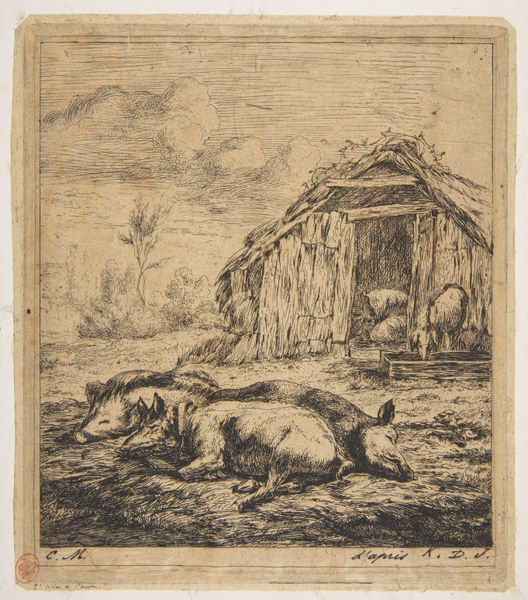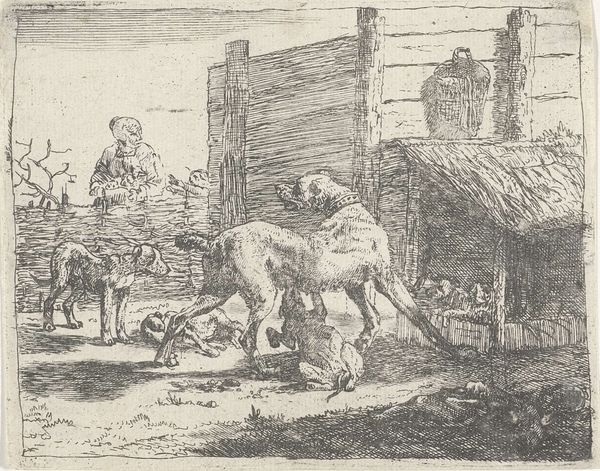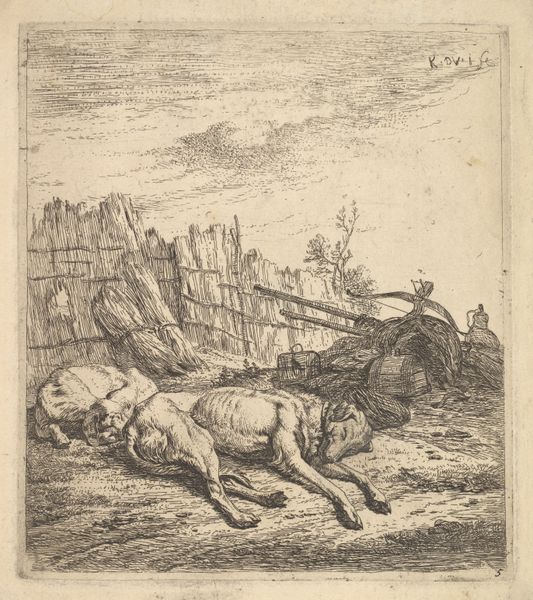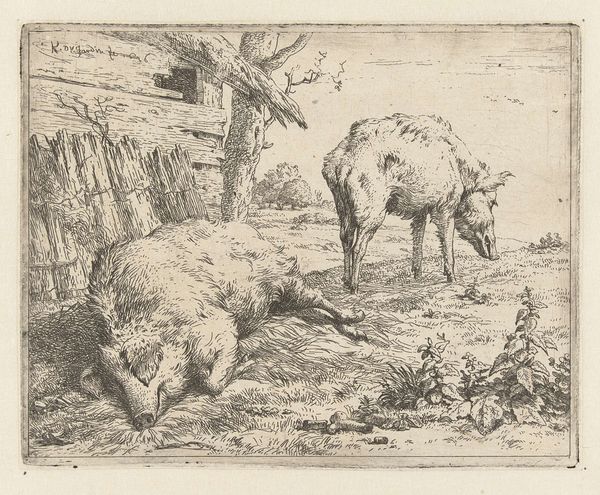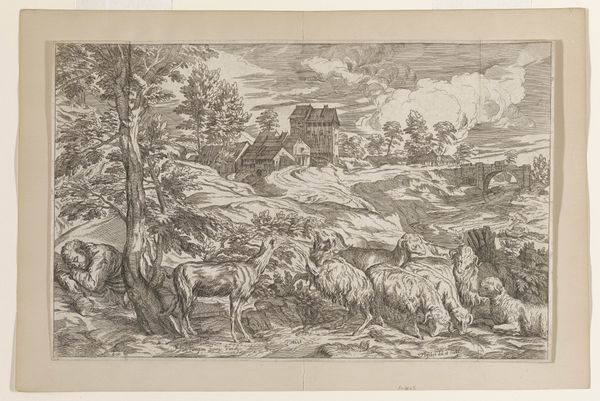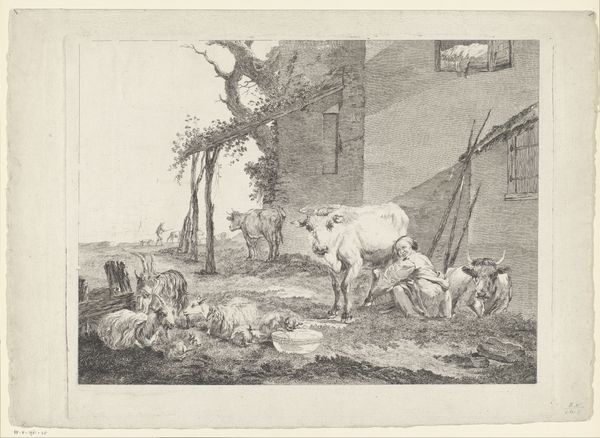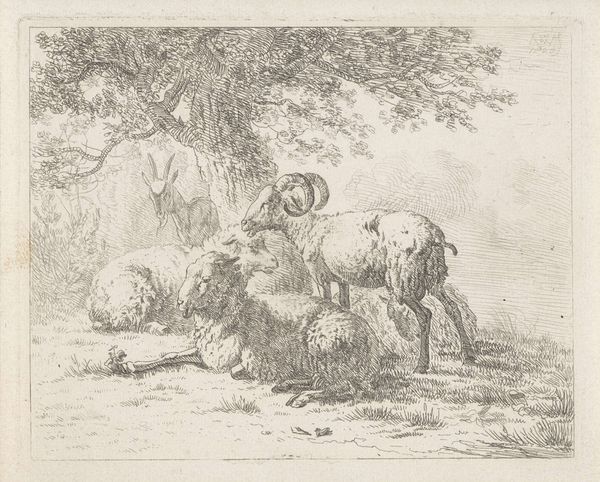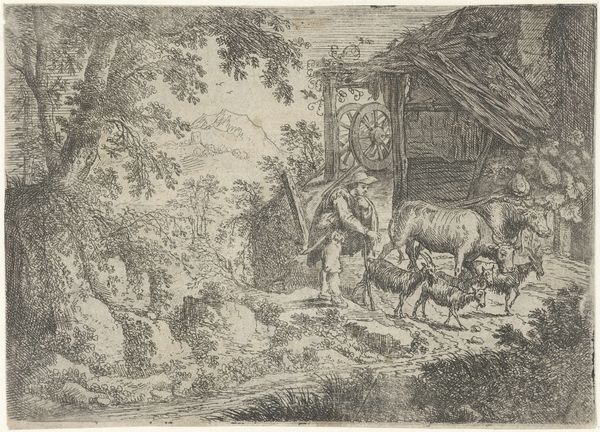
etching
#
dutch-golden-age
#
etching
#
landscape
#
etching
#
figuration
#
genre-painting
#
realism
Dimensions: height 151 mm, width 136 mm
Copyright: Rijks Museum: Open Domain
Curator: Here we have Karel du Jardin's etching, "Three Pigs Before a Sty," created in 1652. Editor: My initial impression is one of bucolic repose. The scene feels utterly still and grounded, the density of the etched lines contributing to the feeling of earthiness. Curator: The composition certainly reinforces that stillness. The horizontal lines dominating the foreground, created by the reclining pigs and the low horizon, anchor the scene. Du Jardin's masterful use of line weight and cross-hatching provides a tactile quality, almost conveying the coarse texture of the pigs' hair and the rough-hewn structure of the sty. Editor: Absolutely. Beyond the formal arrangement, consider how pigs, especially in the 17th century, represented prosperity and rural life. In Dutch Golden Age paintings, these animals often symbolized domestic harmony and the rewards of hard work. But their presence can also signal human vice and moral failings like greed, for instance. Curator: An intriguing duality! Note, too, how the artist frames the composition. The viewer's eye is skillfully drawn through a precise deployment of dark and light values, enhancing spatial depth within this intimate rural landscape. Du Jardin's application of hatching is really remarkable. Editor: Indeed. This etching style harkens back to the medieval bestiaries and emblem books, which assigned certain symbolic properties to animals. In this case, one wonders whether Du Jardin is just presenting a commonplace scene or if he's commenting on Dutch society through these porcine figures. What might it mean that two of the pigs are collared? Are they farm animals or something else entirely? Curator: Fascinating speculation. Though I would also say that the very imperfections and textural variations are critical to understanding the work, offering an intimate glimpse into the artist's working process and choices. Editor: It makes you consider the multiple meanings imbued in everyday life. Thank you for directing our gaze on these details. Curator: It's always rewarding to peel back layers in artwork like this, revealing a richness beyond the immediately visible.
Comments
No comments
Be the first to comment and join the conversation on the ultimate creative platform.
